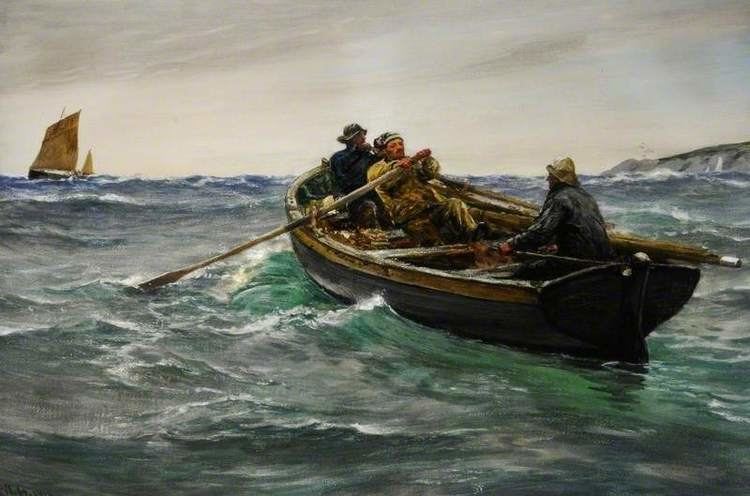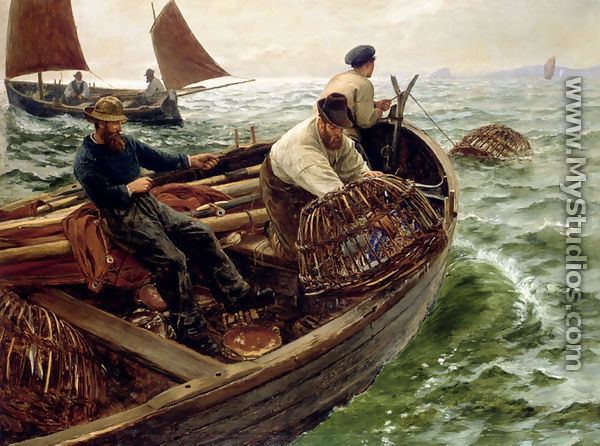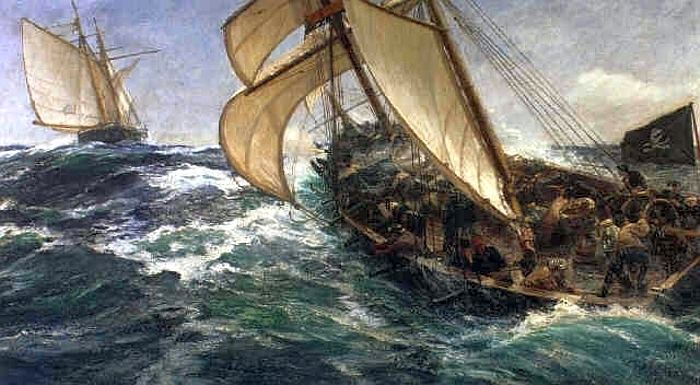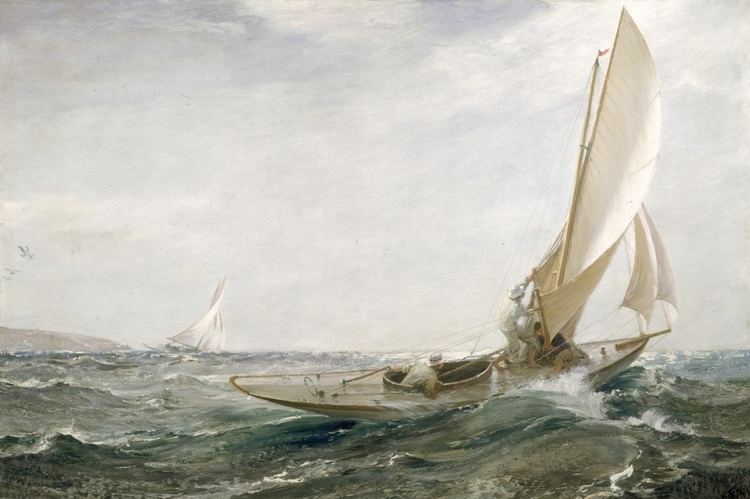Name Charles Hemy Role Artist | Education Royal Academy of Arts | |
 | ||
Artwork Crabbers Bait, Pilchards, A Plymouth Hooker | ||
through sea and air charles napier hemy at the laing art gallery
Charles Napier Hemy (Newcastle-on-Tyne 24 May 1841 – 30 September 1917 Falmouth) was a British painter best known for his marine paintings and his paintings in the Tate collections.

He was born to a musical family in Newcastle-on-Tyne and his two brothers, Thomas and Bernard, were also painters. He trained in the Government School of Design, Newcastle, followed by the Antwerp Academy and the studio of Baron Leys. He returned to London in the 1870s and in 1881 moved to the coastal town of Falmouth in Cornwall. He produced painted figure and landscapes, but is best known works are Pilchards (1897) and London River (1904) which are in the Tate collections.

John Singer Sargent painted a portrait (now in the Falmouth Art Gallery collection) of Hemy on a visit to Hemy's Falmouth home, 'Churchfield', in 1905. The visit highlighted the importance of the circle of artists that surrounded the great marine artist in the town.
Hemy was elected an Associate of the Royal Academy in 1898 and an Academician in 1910, he was also honoured as an Associate of the Royal Society of Painters in Water Colours in 1890 and became a full member in 1897.

He died in Falmouth on 30 September 1917.

His younger brothers Bernard Benedict Hemy (1845–1913) and Thomas Madawaska Hemy (1852–1937) were also painters, though they didn't match his success.
